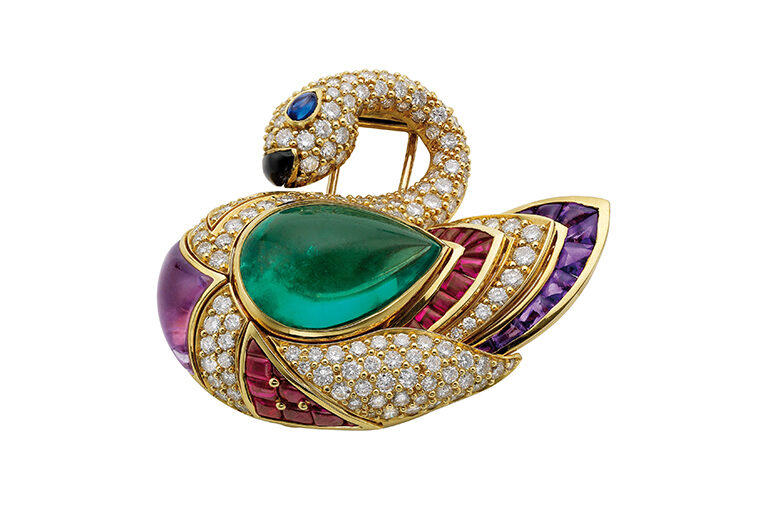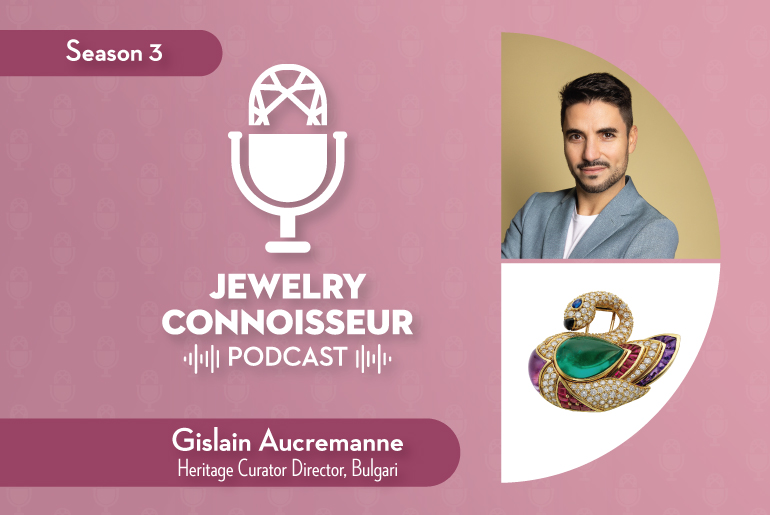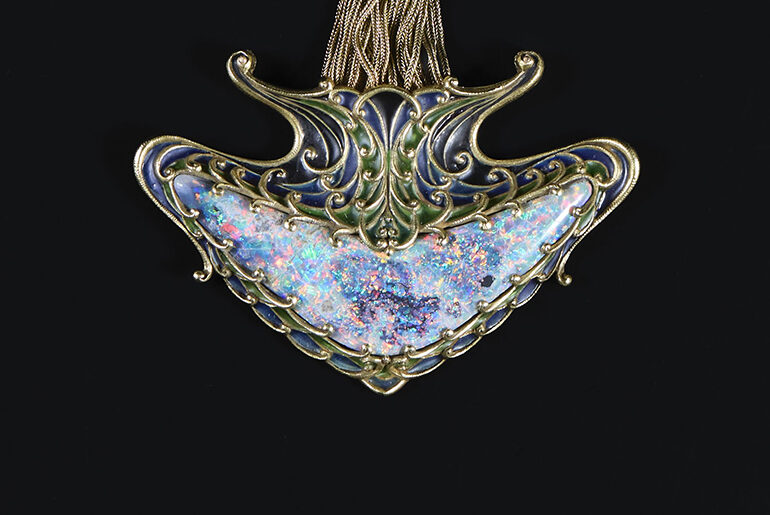Alba Cappellieri traces the transformation of craftsmanship over the last century-plus.
Will diamonds and other gems retain their allure in the 21st century? A new book suggests digital innovators are providing fresh challenges for stonecutters, goldsmiths and jewelry designers. But alongside the shock of the new, Jewellery: From Art Nouveau to 3D Printing by Alba Cappellieri also celebrates 20th-century craftsmanship.

Art Nouveau
Russian royalty and the European bourgeoisie funded the fantastical creations of Fabergé, Cartier, René Lalique and their contemporaries in a time when brands were everything and individual designers went unnamed. It was also a period when, “for the first time ever, the value of jewelry did not come from the materials but from the design,” according to Cappellieri, with jewelers prizing creativity above technical skill.
In the era between 1900 and 1918, pieces took strong inspiration from the natural world. Flowers, vegetables and every kind of creature were in evidence; Lalique honored even bats and vultures. Earrings were played down, as piercing was considered uncouth. But opportunities for jewelers extended beyond personal ornamentation into unexpected fields like furniture, which was often gilded, enameled or embellished with semi-precious stones.
Warmer shades of gold and pastel gems were the materials of choice, frequently with glass for extra sparkle. Tortoiseshell and horn were sought-after as well in an age when combs and buckles were worthy additions to the jewelry box.

Art Deco
“White, black and tutti frutti” is how Cappellieri describes the streamlined but supremely elegant period between the world wars. White manifested as diamonds, pearls and the increasingly popular platinum; black was enamel and onyx. Tutti frutti was a term Cartier coined to reflect the influence of India. Strongly colored stones like jade, coral and turquoise reflected a growing taste for the exotic, inspired by Africa and the Ballets Russes. Topaz made a comeback, aquamarines were prized and quartzes joined the jeweler’s palette.
The architecture and furniture of the Arts and Crafts movement inspired linear and dynamic designs celebrating speed and modernity. Drop earrings and long necklaces falling to the navel were popular, while brooches continued to drip with fantastical creatures. Costume jewelry emerged as a new vehicle for designers, with Bakelite as an important new material. As smoking and visible makeup became socially acceptable for women, cigarette holders, powder compacts and lipstick cases provided new opportunities for jewelers.

Post-World War II
American houses like Tiffany & Co. and Harry Winston, which led the world in postwar jewelry design, ensured diamonds remained a girl’s best friend even as fashion designers embraced costume jewelry. Pop art was a huge influence, but the volatile politics of the late 1960s inspired a shift from the amusing to the radical, with safety-pins and studs making their first appearance as objects of ornamentation. The decorative possibilities of metal showed through with designers like Paco Rabanne, whose disc belts and necklaces were an icon of the ’60s.
Gold, pearls and other gems were not to be denied even in the age of punk. Designers like Andrew Grima created wearable gold sculptures punctuated with pearls and diamonds in the ’70s, while Tiffany and Bulgari served a market crying out for color by setting gold or platinum with rubies, emeralds, sapphires, coral and turquoise woven into eye-popping multicolored, multi-tiered necklaces.
Contemporary
Those born before the turn of the millennium likely never imagined they might one day be able to print jewelry. But now digital artisans are challenging the traditional skills of jewelers from design to manufacture. Not only plastic, but resin, bronze and even gold and silver have become options for printing. These are not mass-produced products, as the finest of them demand hand-finishing. Innovators include Jessica Rosenkrantz and Jesse Louis-Rosenberg, founders of American enterprise Nervous System.
While all jewelry is wearable, harnessing technology to give it a function — for instance, vibrating as a reminder — turns it into a wearable; it gains an added value rather than being a “useless” ornament. Vinaya is a big name in this area, and the London-based startup’s Cleopatra ceramic pendant in a gold-plated silver surround is no less beautiful for incorporating a Bluetooth sensor. The palette continues to expand, with designers transforming industrial materials like stainless steel, carbon, titanium, and even nuts, bolts and plastic flex into stunning new-age pieces.
Among traditional makers, Cappellieri singles out Russians and Italians as the most successful modernizers, and globalization has brought in new players from Asia. But with many of the great 20th-century names of the Western world still going strong and reissuing designs made famous decades ago, we can be confident that diamonds and gold, at least, will truly be forever.

Main image: Bulgari brooch mounted in platinum with diamonds, circa 1935. Bulgari Vintage Collection.





Comments are closed.